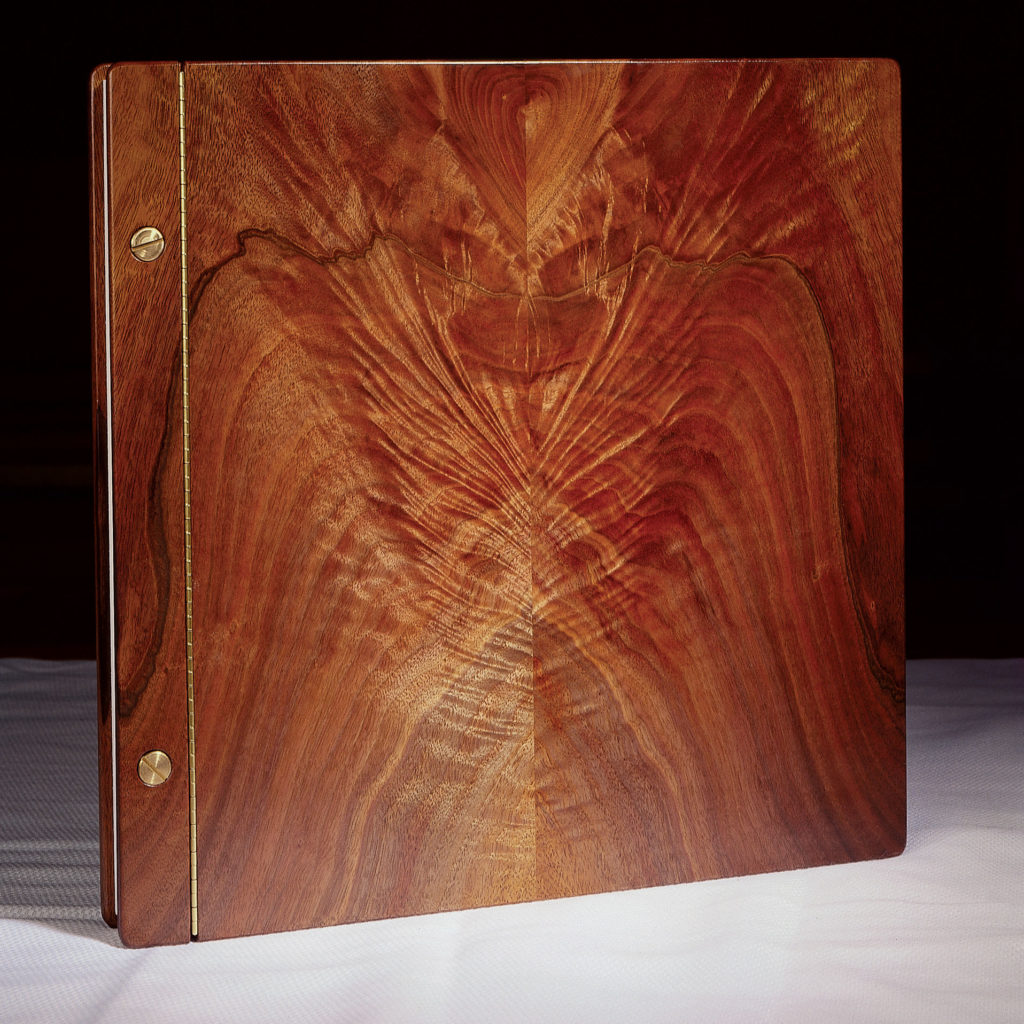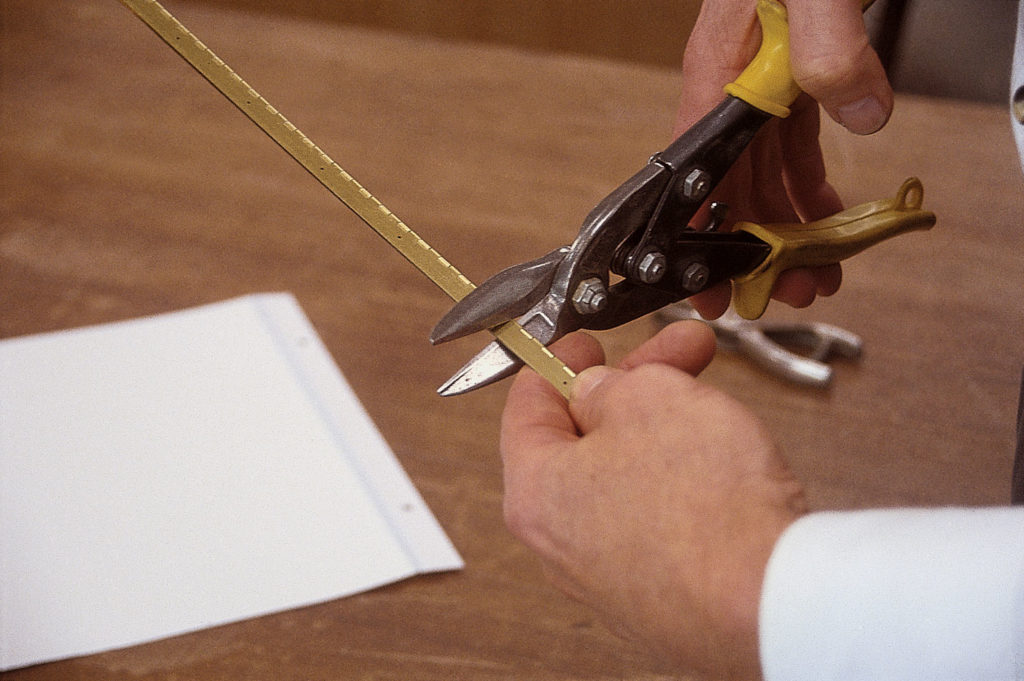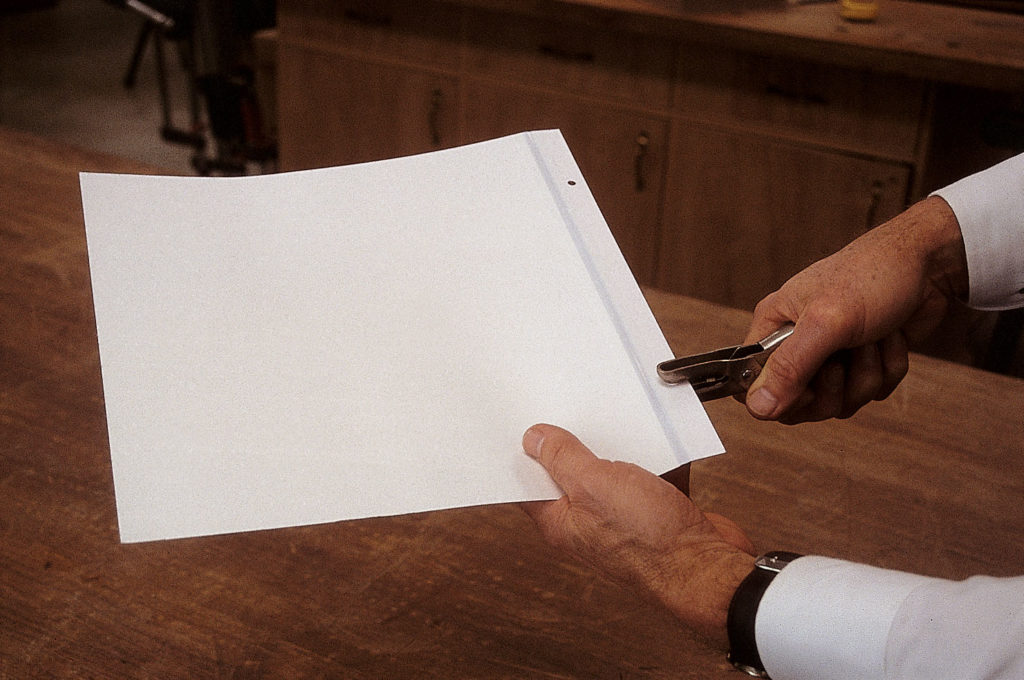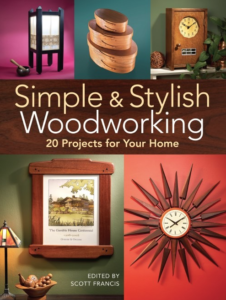We may receive a commission when you use our affiliate links. However, this does not impact our recommendations.

Editor’s note: With the holidays upon us, I’m looking through the magazines and books we own for fun handmade gifts – things that you can build in not too much shop time, but that will help to create a lifetime of memories for the recipients. I’ll post (at least) two every week between now and the new year. This is Holiday Project Post number three – for the “Pint-sized Pickup,” click here; for a Craftsman-style Wall Shelf, click here.
— Megan Fitzpatrick
by Steve Shanesy
Why settle for an ordinary photo album when you can make your own? Here is an easy and fun project. It could even be simpler than what you see here if you skip the resawing and bookmatching of the 1⁄4″-thick front and back covers.
In fact, if you were making five or six at a time, you could probably spend no more than a half hour on each one. Or, you could go in the other direction and make it more complicated with inlay or chip carving on the front.
There could, in fact, be many variations on this project. You could easily alter the size of the covers for smaller photo album sheets, you could set it up with blank pages for use as a personal journal, or documents from your family tree research.
No matter what direction your version of this project takes, two simple elements will make it all possible: the post binding screws that fix the covers and pages together, and the small-scale continuous hinge that allows the covers to open, making them truly functional. The hinges and post binding screws can be ordered through the Lee Valley woodworking catalog.
Getting Started
A trip to an art or office-supply store is the first step. Select the photo page size you want to work with. Some pages simply are plain sheets that are inserted in clear plastic sheet protectors. The protectors, in turn, are usually punched for use in a three-ring binder. The sheets I used were hole punched for post binding and “hinged,” meaning each sheet was made to fold at a given place along the edge where it would be bound into the album.
I selected a sheet size that was 12″ x 12″. Next I ordered my post binding screws and hinge from Lee Valley. The screws, called “Chicago Bolts” in the catalog, come in various lengths, with each length allowing for a 1⁄4″ adjustment. The brass hinge comes in a 3′ length and is easily cut.
The page size and hinge gave me dimensions I could start to work with. The wood covers’ finished size is 1⁄4″ x 12-1⁄2″ square. This allows 1⁄4″ for the cover to overlap top and bottom. The bound side has 1⁄8″overlap, leaving 3⁄8″ for the open side. When I cut the pieces I made the width 12-5⁄8″. This allowed a table saw cut to separate the binding strip from the cover piece. The cover thickness was 1⁄4″, which is perfect for the hinge leaf.
A Word About Wood Choice
My album covers are made using feather-figured walnut that was resawn and bookmatched. It came from a tree in my neighborhood that was taken down and sawn into lumber about three years ago. Although it’s been air drying all this time I was nervous as a cat about my pieces warping after resawing and glue up. Highly figured wood often has a mind of its own. I know that walnut is a relatively stable wood, like mahogany, but I kept my pieces on a flat surface with a weight on top until I was able to put a finish on them. Even at the thin 1⁄4″ dimension, I was lucky and both pieces have remained perfectly flat.
The point of all this is to remind you to be cautious about your wood selection and handling. Try to use a stable species. A narrower album would be less risky.
Hardware Installation & Finishing
I followed the hole patterns for the post binding screws that were already in the album sheets. Allowing for the top and bottom overhang, my hole center for the screws was 2-9⁄16″ from the top and bottom. From the binding edge, I marked a hole center of 1⁄2″.
The posts required a 1⁄4″ hole with a 1⁄2″-diameter counterbore to recess the flat heads of the screws. I used a Forstner bit for drilling in my drill press. It is necessary to drill the front and back banding strip exactly alike.
At this point I progressively sanded to #220 grit, rounded the outside corners to a 3⁄16″ radius, and heavily eased the edges, except for the edges where the hinge would be installed.
The finish may be a bit more complicated than you are accustomed to, but the fantastic figure in the walnut demanded as good a finish as I know how. And it was worth each step. Because walnut is an open-pore wood, I filled the grain using paste wood filler. I added oil-based walnut stain to the filler to color the filler and the wood. After applying the filler, I allowed it to dry for 24 hours.
For a clear top coat I used a lacquer that comes in an aerosol spray can. The product is the best lacquer in a can I’ve ever used. It’s called Master’s Magic and is available from The Woodturners Catalog. A can of sanding sealer and satin finish lacquer are required, and the product should be used only in a well-ventilated area free of open flames (including pilot lights on water heaters or furnaces) or potential sparks.
After applying the sanding sealer, carefully sand with #360-grit paper, being especially careful near the edges. The idea is to lightly sand down any dust particles or bubbles that may have formed but not to sand into the stain color below the sealer. After sanding the sealer, spray two top coats with the satin finish. Allow the finish to cure overnight, even though it will be dry to the touch in 15 minutes.
I used a pair of snips to cut the hinges to 12-1⁄8″ long. Cut the hinge at one of the leaf joints. The hinges are attached using flat-head brads that you should order along with the hinges. Predrill the holes for the brads into the edge of the wood leaving about 1⁄4″ of the brad length not drilled. Predrilling should ensure nothing pokes though the face of the cover.

Brass miniature
continuous hinges are a cinch to cut with a pair of metal shears. Make your cut at the joint where two hinge leaves meet nearest your ideal length.
Insert the post part of the post binding screws and fill your photo page inserts. I found that it was necessary to slightly enlarge the holes in the sheets with an ordinary paper punch. When done, lay the other cover over the post and then insert the screw.
If you are considering leaving the album on a coffee tabletop, or if you just want to protect the back cover from scratches, put a felt bumper pad in each corner of the back cover.

An ordinary paper hole punch enlarged the holes that were pre-punched by the manufacturer of the photo album sheets.
As a photo album or scrapbook, this project makes an extra special gift for an extra special occasion.
Supplies
Lee Valley Tools
leevalley.com or 800-871-8158
Brass piano hinge,
12mm x 800mm,
#00D50.12, $7.40
Brass escutcheon pins,
flat head, #00D41.02 $2.60
Chicago bolts, brass,
30 – 36mm, 4 pack,
#00K40.05, $4.70
Craft Supplies USA
woodturnerscatalog.com
800-551-8876
Masters Magic Lacquer Sanding Sealer, aerosol can, #299-0100, $10.95
Masters Magic Satin Spray Lacquer, aerosol can,
#299-0001, $10.95
Prices correct at time of publication. PWM
 Excerpted from “Simple & Stylish Woodworking: 20 Projects for your Home,” by the editors of Popular Woodworking
Excerpted from “Simple & Stylish Woodworking: 20 Projects for your Home,” by the editors of Popular Woodworking
Here are some supplies and tools we find essential in our everyday work around the shop. We may receive a commission from sales referred by our links; however, we have carefully selected these products for their usefulness and quality.








